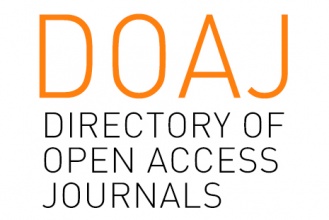Uso de antimicrobianos no tratamento da neutropenia febril em pacientes pediátricos em um hospital de ensino
DOI:
https://doi.org/10.30968/rbfhss.2023.144.0903Resumo
Objetivos: avaliar a utilização de antimicrobianos para o tratamento de neutropenia febril em pacientes pediátricos. Métodos: estudo transversal, retrospectivo e observacional, realizado nas unidades de pediatria de um hospital de ensino, de grande porte, com atenção de média e alta complexidade. Foram incluídos no estudo todos os pacientes com idade entre 28 dias e 17 anos, 11 meses e 29 dias, que apresentaram neutropenia febril e iniciaram algum antimicrobiano venoso no período de janeiro de 2022 a junho de 2022. Os dados foram coletados através dos sistemas disponíveis e foram comparados com o protocolo clínico setorial. Resultados: foram incluídos no estudo 40 pacientes, sendo a maioria do sexo masculino e com mediana de idade de 8 anos. Foram encontrados 70 episódios de neutropenia, sendo que 57% estavam em desacordo com o protocolo. As inadequações mais comuns foram o uso de antimicrobianos por tempo superior ao necessário, seguido de descalonamento não realizado após resultado de cultura disponível e antimicrobiano substituído de forma incorreta. Dos antimicrobianos usados, o mais prevalente foi o cefepime, e dos antifúngicos, foi a micafungina. As doses prescritas estavam de acordo com o protocolo, exceto em oito prescrições de dose de ataque de polimixina e uma de teicoplanina. As hemoculturas foram positivas em 25,7% dos casos e os microorganismos mais encontrados foram Escherichia coli, Pseudomonas aeruginosa, Serratia marcescens, Staphylococcus epidermidis, Staphylococcus haemolyticus e Staphylococcus hominis. Conclusão: foram verificadas altas taxas de não conformidade no uso de antimicrobianos para tratamento da neutropenia febril com o protocolo clínico setorial, apesar de a maioria das prescrições seguir o recomendado quando se tratava do início de tratamento. É imprescindível a adequação das prescrições ao protocolo institucional para que o paciente receba um tratamento eficaz e seguro, evitando a ocorrência de resistência bacteriana pelo uso inadequado dos medicamentos.
Downloads
Referências
Ahmed NM, Palazzi DL. Evaluation of children with non-chemotherapy-induced neutropenia and fever-UpToDate [Internet]. 2021. Available from: https://www.uptodate.com/contents/evaluation-of-children-with-non-chemotherapy-induced-neutropenia-and-fever?topicRef=6051&source=see_l
Kebudi R, Kizilocak H. Febrile Neutropenia in Children with Cancer: Approach to Diagnosis and Treatment. Curr Pediatr Rev. 2018 Jun 22;14(3):204–9.
Freifeld AG, Bow EJ, Sepkowitz KA, et al. Clinical practice guideline for the use of antimicrobial agents in neutropenic patients with cancer: 2010 Update by the Infectious Diseases Society of America. Vol. 52, Clinical Infectious Diseases. Oxford University Press; 2011.
Frater JL. How I investigate neutropenia. Vol. 42, International Journal of Laboratory Hematology. Blackwell Publishing Ltd; 2020. p. 121–32.
Silva D, Barreto J, Córdoba J, et al. Diretrizes para o manejo inicial da neutropenia febril, após quimioterapia, em crianças e ado- lescentes com câncer. Departamento Científico de Oncologia. 2018.
Fernandes T. Atualização de condutas em pediatria. Socie- dade de Pediatria de São Paulo. 2019.
Febre em lactentes e crianças: Fisiopatologia e manejo [In- ternet]. 2022. Available from: https://www.uptodate.com/ contents/fever-in-infants-and-children-pathophysiology-and-management/print?search=definitionoffeverinchil dren&…1/31www.uptodate.com
Lehrnbecher T. Treatment of fever in neutropenia in pediatric oncology patients. Vol. 31, Current Opinion in Pediatrics. Lip- pincott Williams and Wilkins; 2019. p. 35–40.
Roseland J. Improving Antibiotic Timing in Febrile Neutrope- nia for Pediatric Oncology Patients with a Central Line. Journal of Pediatric Oncology Nursing. 2021 May 1;38(3):185–9.
Lehrnbecher T, Averbuch D, Castagnola E, et al. 8th Europe- an Conference on Infections in Leukaemia: 2020 guidelines for the use of antibiotics in pediatric patients with cancer or post-haematopoietic cell transplantation. Vol. 22, The Lancet Oncology. Lancet Publishing Group; 2021. p. e270–80.
Lehrnbecher T, Robinson P, Fisher B, et al. Journal Of Clinical Oncology Guideline for the Management of Fever and Neu- tropenia in Children With Cancer and Hematopoietic Stem- Cell Transplantation Recipients: 2017 Update. J Clin Oncol [Internet]. 2017;35:2082–94. Available from: https://doi. org/10.1200/JCO.2016.
Kebede HK, Gesesew HA, Woldehaimanot TE, et al. Antimi- crobial use in paediatric patients in a teaching hospital in Ethi- opia. PLoS One. 2017 Mar 1;12(3).
Religioni U, Pakulska T. Rational drug use in hospital set- tings–areas that can be changed. J Med Econ. 2020 Oct 2;23(10):1205–8.
Wang H, Wang H, Yu X, et al. Impact of antimicrobial stew- ardship managed by clinical pharmacists on antibiotic use and drug resistance in a Chinese hospital, 2010-2016: A retrospective observational study. BMJ Open. 2019 Aug 1;9(8).
Karandikar M v., Milliren CE, Zaboulian R, et al. Limiting van- comycin exposure in pediatric oncology patients with febrile neutropenia may be associated with decreased vancomycin-resistant enterococcus incidence. J Pediatric Infect Dis Soc. 2020;9(4):428–36.
Reinecke J, Lowas S, Snowden J, et al. Blood Stream Infections and Antibiotic Utilization in Pediatric Leukemia Patients With Febrile Neutropenia [Internet]. 2018. Available from: www.jpho-online.com
Yang J, Zheng L, Guan YY, et al. Drug and therapeutics committee interventions in managing irrational drug use and an- timicrobial stewardship in China. Front Pharmacol. 2022 Jul 22;13.
Machowska A, Lundborg CS. Drivers of irrational use of antibi- otics in Europe. Vol. 16, International Journal of Environmental Research and Public Health. MDPI AG; 2019.
Scheler M, Lehrnbecher T, Groll AH, et al. Management of children with fever and neutropenia: results of a survey in 51 pediatric cancer centers in Germany, Austria, and Switzerland. Infection. 2020 Aug 1;48(4):607–18.
Wu CT, Chen CL, Lee HY, et al. Decreased antimicrobial resistance and defined daily doses after implementation of a clinical culture-guided antimicrobial stewardship program in a local hospital. Journal of Microbiology, Immunology and Infection. 2017 Dec 1;50(6):846–56.
Sano H, Kobayashi R, Suzuki D, et al. A prospective random- ized trial comparing piperacillin/tazobactam with meropenem as empirical antibiotic treatment of febrile neutropenic children and adolescents with hematologic and malignant disorders. Pediatr Blood Cancer. 2017 Jun 1;64(6).
Rosanova MT, Cuellar-Pompa L, Lede R. Eficacia y seguridad del tratamiento empírico con piperacilina/tazobactan como monoterapia en episodios de neutropenia y fiebre en niños con cáncer: revisión sistemática y meta-análisis. Rev Chilena Infectol 2021; 38 (4): 488-494
Huemer M, Mairpady Shambat S, Brugger SD, et al. Antibiotic resistance and persistence—Implications for human health and treatment perspectives. EMBO Rep. 2020 Dec 3;21(12).
Yamashita C, Takesue Y, Matsumoto K, et al. Echinocandins versus non-echinocandins for empirical antifungal therapy in patients with hematological disease with febrile neutropenia: A systematic review and meta-analysis. Journal of Infection and Chemotherapy. 2020 Jun 1;26(6):596–603.
Chiotos K, Hayes M, Gerber JS, et al. Treatment of Carbapen- em-Resistant Enterobacteriaceae Infections in Children. Vol. 9, Journal of the Pediatric Infectious Diseases Society. Oxford University Press; 2019. p. 56–66.
Sathyapalan DT, James J, Sudhir S, et al. Antimicrobial stew- ardship and its impact on the changing epidemiology of poly- myxin use in a south indian healthcare setting. Antibiotics. 2021 May 1;10(5).
Tsuji BT, Pogue JM, Zavascki AP, et al. International Consensus Guidelines for the Optimal Use of the Polymyxins: Endorsed by the American College of Clinical Pharmacy (ACCP), Euro- pean Society of Clinical Microbiology and Infectious Diseas- es (ESCMID), Infectious Diseases Society of America (IDSA), International Society for Anti-infective Pharmacology (ISAP), Society of Critical Care Medicine (SCCM), and Society of Infec- tious Diseases Pharmacists (SIDP). Pharmacotherapy. 2019 Jan 1;39(1):10–39.
Pea F. Teicoplanin and therapeutic drug monitoring: An update for optimal use in different patient populations. Vol. 26, Journal of Infection and Chemotherapy. Elsevier B.V.; 2020. p. 900–7.
Kim SH, Kang CI, Huh K, et al. Evaluating the optimal dose of teicoplanin with therapeutic drug monitoring: not too high for adverse event, not too low for treatment efficacy. Euro- pean Journal of Clinical Microbiology and Infectious Diseases. 2019 Nov 1;38(11):2113–20.
Alali M, David MZ, Danziger-Isakov LA, et al. Pediatric Febrile Neutropenia: Change in Etiology of Bacteremia, Empiric Choice of Therapy and Clinical Outcomes [Internet]. 2020. Available from: www.jpho-online.com
MacMillan KM, MacInnis M, Fitzpatrick E, et al. Evaluation of a pharmacist-led antimicrobial stewardship service in a pe- diatric emergency department. Int J Clin Pharm. 2019 Dec 1;41(6):1592–8.
Pharm Sci PJ, Tian J, Wang MM, et al. Effect of pharmacist interventions on antibiotic use in the general pediatric ward. 2020;33(3):1389–95.
Parente DM, Morton J. Role of the Pharmacist in Antimicro- bial Stewardship. Vol. 102, Medical Clinics of North America. W.B. Saunders; 2018. p. 929–36.
Downloads
Publicado
Como Citar
Edição
Seção
Licença
Copyright (c) 2023 Autores

Este trabalho está licenciado sob uma licença Creative Commons Attribution-NonCommercial-NoDerivatives 4.0 International License.
Os autores transferem, atribuem ou transmitem à JHPHS: (1) o direito de conceder permissão para republicar ou reimprimir o material indicado, no todo ou em parte, sem taxa; (2) o direito de imprimir cópias republicadas para distribuição gratuita ou venda; e (3) o direito de republicar o material indicado em qualquer formato (eletrônico ou impresso). Além disso, o abaixo assinado afirma que o artigo descrito acima não foi publicado anteriormente, no todo ou em parte, não está sujeito a direitos autorais ou outros direitos, exceto pelo (s) autor (es), e não foi enviado para publicação em outros lugares, exceto como comunicado por escrito para JHPHS neste documento.
Os autores mantêm os direitos autorais e concedem à revista o direito de primeira publicação com o trabalho licenciado simultaneamente sob uma Licença de atribuição Creative Commons Attribution (CC-BY) que permite que outros compartilhem o trabalho com um reconhecimento da autoria do trabalho e publicação inicial nesta revista.
Politica de Auto-arquivamento
Autores tem permissão e são encorajados a submeter o documento final em pdf dos artigos a páginas pessoais ou portais institucionais, após sua publicação neste periódico (sempre oferecendo a referência bibliográfica do item).








